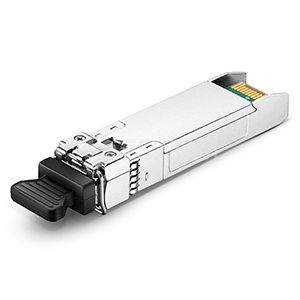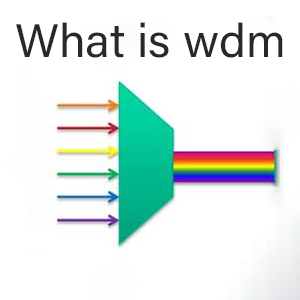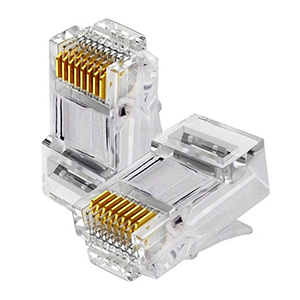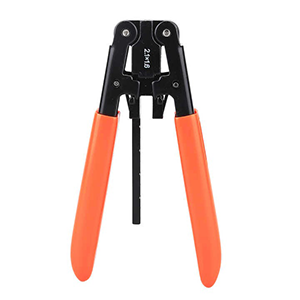In this article, I will provide an in-depth analysis of the SFP optical module, which is a powerful optical fiber transmission device. We will introduce the definition, importance and application areas of SFP to help you understand its key role in modern communication networks. As a high-performance photoelectric conversion module, SFP optical module has fast data transmission, reliable signal transmission and wide applicability. Let us explore the wonderful world of SFP optical modules together!
What does SFP stand for
SFP stands for Small Form-Factor Pluggable, and is often abbreviated as SFP optical module. It is a small optical module that can be used in optical fiber communications and network equipment to provide photoelectric conversion and optical signal transmission functions.
The origin and development history of SFP:
The SFP optical module originated in 2001 and was first proposed and promoted by Cisco Systems. Prior to this, optical modules usually used larger packages, such as GBIC (Gigabit Interface Converter). The emergence of SFP is to meet the needs of rapidly developing network equipment for smaller and higher-density optical modules.
The basic concepts and principles of SFP as an optical module:
The SFP optical module is a pluggable photoelectric conversion device used to convert electrical signals into optical signals and transmit them through optical fibers. It is small, high-density and hot-swappable, enabling replacement without disrupting network operations.
The basic principle of the SFP optical module is to use an internal laser (or LED) to convert electrical signals into optical signals and transmit them to the target device through optical fibers. The SFP optical module at the receiving end converts the received optical signal into an electrical signal for processing by the target device. This photoelectric conversion process realizes the mutual conversion between electrical signals and optical signals, making fiber optic communication possible.
SFP optical modules usually support different transmission rates and fiber types, such as Gigabit Ethernet, Fiber Channel, etc. They have standardized dimensions and interfaces, making them easy to plug in and out. SFP optical modules can also be hot-swapped as needed without shutting down the device or interrupting the network connection.
Due to the miniaturization and pluggability of SFP optical modules, it is widely used in modern network equipment, including switches, routers, servers, optical transmission equipment, etc. The continuous development and evolution of SFP has also derived some variants, such as SFP+, QSFP, CFP, etc., to meet the needs of different speeds and applications.
How SFP works
SFP optical modules realize the functions of photoelectric conversion and electro-optical conversion, allowing data to be transmitted between optical fibers and cables.
Photoelectric conversion principle:
At the transmitting end, the SFP optical module converts electrical signals into optical signals through an internal laser (or LED). The light signal produced by the laser is modulated to represent the ones and zeros of digital data. The output optical signal of the laser is coupled into the optical fiber through an appropriate optical device (such as a fiber coupler) and transmitted along the optical fiber.
Electro-optical conversion principle:
At the receiving end, the SFP optical module uses a light detector (such as a photodiode or photoresistor) to convert the received optical signal into an electrical signal. The light signal received by the photodetector is converted into a current or voltage, amplified and processed to restore the original digital data.
Data transmission and signal transmission process:
During the data transmission process, the SFP optical module at the sending end converts the input electrical signal into an optical signal and transmits it to the SFP optical module at the receiving end through optical fiber. The SFP optical module at the receiving end converts the received optical signal into an electrical signal and outputs it to the target device for processing.
During the signal transmission process, the SFP optical module uses modulation technology to convert digital data into optical signals. Commonly used modulation techniques include direct modulation, external modulation and phase modulation. Modulation technology converts digital data into changes in intensity, frequency, or phase of an optical signal for transmission. At the receiving end, the optical signal is converted into an electrical signal by a photodetector and undergoes a demodulation or detection process to restore the original digital data.
Sending and receiving functions:
The SFP optical module has sending and receiving functions.
Sending function: The SFP optical module at the sending end receives the input electrical signal, converts it into an optical signal, and transmits it to the target device through optical fiber.
Receiving function: The SFP optical module at the receiving end receives the optical signal from the optical fiber and converts it into an electrical signal for processing and decoding by the target device.
Through the combination of sending and receiving functions, SFP optical modules realize photoelectric conversion and electro-optical conversion in optical fiber communications, allowing data to be reliably transmitted between optical fibers and cables. This makes SFP optical modules one of the commonly used optical transmission solutions in modern network equipment.
SFP types and specifications
There are several different types of SFP optical modules, including SFP, SFP+, SFP28, etc. Each type has specific characteristics, data transfer rates, and applicable scenarios.
SFP (Small Form-Factor Pluggable):
- Features: SFP is the earliest type of SFP optical module. It has the characteristics of miniaturization and pluggability, and is suitable for Gigabit Ethernet (1Gbps) applications.
- Data transfer rate: 1.25 Gbps (Gigabit Ethernet)
- Applicable scenarios: Commonly used in enterprise networks, used to connect switches, routers, servers and other equipment.
SFP+ (Enhanced Small Form-Factor Pluggable):
- Features: SFP+ is an upgraded version of SFP, retaining the miniaturization and pluggability features of SFP, but providing higher data transfer rates and a wider range of applications.
- Data transfer rate: Generally 10 Gbps, some models support higher rates (such as 16 Gbps, 25 Gbps).
- Applicable scenarios: Widely used in high-speed network environments such as data centers, server interconnections, storage networks, and fiber channels.
SFP28 (Small Form-Factor Pluggable 28):
- Features: SFP28 is a further upgrade of SFP+, providing higher data transfer rates and higher bandwidth capacity.
- Data transfer rate: Generally 25 Gbps, some models support higher rates (such as 50 Gbps).
- Applicable scenarios: Suitable for applications such as high-density data centers, cloud computing, large-scale storage and high-performance computing.
The specifications and parameter descriptions of SFP optical modules usually include the following:
-
Transmission rate: Indicates the maximum data transmission rate supported by the SFP optical module, such as 1.25 Gbps, 10 Gbps, 25 Gbps, etc.
-
Fiber type: Specify the fiber type suitable for the SFP optical module, such as multi-mode fiber (MMF) or single-mode fiber (SMF).
-
Wavelength: Indicates the wavelength range of the SFP optical module for sending and receiving optical signals, such as 850 nm (multi-mode fiber) or 1310 nm/1550 nm (single-mode fiber).
-
Transmission distance: Indicates the maximum transmission distance supported by the SFP optical module, which can range from tens of meters to tens of kilometers, depending on the fiber type and wavelength.
-
Interface type: Specify the interface type of the SFP optical module, such as LC (common), SC, ST, etc.
-
Operating temperature range: Indicates the temperature range in which the SFP optical module can work normally, usually expressed in degrees Celsius (℃).
These specifications and parameter descriptions may vary according to the specific SFP optical module model and manufacturer. Users should make selections based on actual needs and equipment requirements when selecting and using SFP optical modules.
Application fields of SFP
SFP optical modules are widely used in various fields due to their miniaturization, pluggability and high-speed transmission. The following are the main applications of SFP in network communications, data centers, telecommunications industries and other fields:
Network communication field:
- Enterprise network: SFP optical modules are often used in enterprise networks to connect switches, routers, servers and storage devices to achieve high-speed data transmission and network connections.
- Optical fiber access network: SFP optical modules play a key role in the optical fiber access network, used for fiber-to-user access and providing high-speed broadband connection and transmission.
- Wireless communication: SFP optical modules can be used in wireless base stations and wireless transmission equipment to support high-speed data transmission and long-distance communication.
Data Center Area:
- Server interconnection: SFP optical modules are used for high-speed connections between servers in data centers, supporting low-latency, high-bandwidth data transmission.
- Storage network: SFP optical modules are often used in storage networks (SAN) to connect storage devices, hosts and switches to achieve reliable data storage and sharing.
- Supercomputing: SFP optical modules are used for high-speed data transmission between high-performance computing nodes in supercomputing environments, providing excellent computing power and data throughput.
Telecom industry:
- Optical transmission network: SFP optical module is a key component in the optical transmission network. It is used for long-distance optical fiber transmission and optical network interconnection, providing high-speed and stable optical signal transmission.
- Fiber optic broadband access: SFP optical modules are used in fiber optic broadband access networks to support high-speed broadband access and multimedia data transmission.
Practical application cases:
-
In an enterprise network, a company uses SFP optical modules to connect its switches and servers to achieve high-speed data transmission and stable network connections, supporting communication and data sharing within the enterprise.
-
In the data center, a large cloud service provider uses SFP+ optical modules to interconnect its servers to build high-bandwidth, low-latency server clusters to support large-scale data processing and storage.
-
In the telecommunications industry, a telecommunications operator uses SFP optical modules to build an optical transmission network, transmit optical signals to long-distance user terminals, and provide high-speed broadband access and stable communication services.
These cases demonstrate the application and advantages of SFP optical modules in different scenarios, including high-speed data transmission, reliability, flexibility and pluggability, making it one of the important components and solutions in various fields.
Advantages and challenges of SFP
Advantages:
-
Small size: SFP optical module has a miniaturized design. Compared with other optical module types, it is smaller and takes up less space, making it suitable for high-density applications and compact equipment design.
-
Flexibility: The pluggable design of the SFP optical module gives it good flexibility. Users can choose different types of SFP optical modules according to actual needs, including different data transmission rates, fiber types and transmission distances, to meet specific application requirements.
-
Interchangeability: SFP optical modules adopt standardized interfaces and specifications, ensuring interoperability between SFP optical modules produced by different manufacturers. This means that users can replace or mix SFP optical modules from different manufacturers on the device to upgrade or replace as needed.
-
Hot-swappable support: SFP optical modules support hot-swappable functionality and can be replaced while the device is running without shutting down the device or interrupting the network connection. This makes maintenance and upgrades more convenient and faster.
Challenge:
-
Cost: Compared to some other optical module types, the cost of SFP optical modules may be higher. Although the price of SFP optical modules has declined in the past few years, it may still cause certain economic pressure on some low-cost applications or large-scale deployment.
-
Power consumption: In some high-speed and high-density applications, the power consumption of SFP optical modules may become a challenge. As the data transmission rate increases, SFP optical modules need to consume more power to achieve high-performance data transmission, which may have an impact on some power-sensitive applications.
-
Compatibility issues: Although SFP optical modules adopt standardized interfaces and specifications, compatibility issues may still be encountered in actual applications. Some specific equipment and manufacturers may have certain restrictions on the compatibility of SFP optical modules. Therefore, when selecting and using SFP optical modules, you need to ensure compatibility with the equipment and systems.
Despite some challenges, SFP optical modules are still an important optical module widely used in network communications, data centers and telecommunications industries due to their advantages of small size, flexibility and interchangeability, as well as hot-swappable support. One of the module selections. With the development of technology and market demand, these challenges will be continuously improved and solved.
Future development trend of SFP
SFP as a mature optical module technology, there are still some key technology trends and development directions in the future. The following are the current technology trends and future development directions of SFP, focusing on the future applications of SFP in high-speed data transmission, optical fiber networks and cloud computing:
High-speed data transmission:
- High-rate support: As data demand grows, SFP optical modules will continue to promote higher data transmission rates. At present, SFP+ and QSFP+ have become common high-speed optical modules, and higher-speed SFP optical modules may be developed in the future to meet the growing bandwidth demand.
- Optical module integration: In order to improve performance and reduce power consumption, future SFP optical modules may use more integrated designs. This includes integrating optoelectronic converters, driver circuitry and signal processing functions to reduce module complexity and power consumption.
Fiber optic network:
- Long-distance transmission: SFP optical modules have been widely used in short-distance transmission applications and may be expanded to longer transmission distances in the future. By using advanced optical fiber technology and signal processing algorithms, SFP optical modules can achieve longer-distance optical fiber transmission and are suitable for optical fiber networks across cities or countries.
- Multi-mode and single-mode: Currently, SFP optical modules mainly support multi-mode optical fiber transmission, but support for single-mode optical fiber may be added in the future. Single-mode optical fiber provides greater transmission distance and higher bandwidth capacity, so in future optical fiber networks, SFP optical modules may support a wider range of optical fiber types.
Cloud computing:
- High-density deployment: There is an increasing demand for high density and high performance in cloud computing environments, and SFP optical modules will continue to adapt to this trend. Future SFP optical modules may further reduce their size to accommodate higher-density server and switch deployments.
- Data center interconnection: As the scale and complexity of data centers increase, SFP optical modules will play a more important role in data center interconnection. Future SFP optical modules may provide higher bandwidth and lower latency to meet the needs of fast and reliable data transmission between data centers.
Generally speaking, the future development of SFP optical modules will revolve around the fields of high-speed data transmission, optical fiber networks and cloud computing. Through continuous innovation and technological advancement, SFP optical modules will continue to adapt to growing data needs and provide higher performance, greater flexibility and higher reliability.
Comparison between SFP and other optical modules
SFP (Small Form-Factor Pluggable) is a common optical module type that has some unique advantages and difference. Here’s how they compare:
Size and Density:
- SFP: SFP optical modules are relatively small and suitable for high-density deployment and compact equipment design. Its size is smaller than GBIC and XFP.
- GBIC: GBIC optical module is larger and has a relatively large volume, so it is suitable for some applications that do not have strict size requirements.
- XFP: The size of XFP optical module is between SFP and GBIC, usually slightly larger than SFP.
Speed and bandwidth:
- SFP: SFP optical modules support multiple speeds, including Gigabit Ethernet (1 Gbps) and 10 Gigabit Ethernet (10 Gbps). For higher speed applications, other higher speed optical modules can be selected.
- GBIC: GBIC optical modules are mainly used for Gigabit Ethernet (1 Gbps) applications and are not suitable for higher-speed data transmission.
- XFP: XFP optical modules are mainly used for 10 Gigabit Ethernet (10 Gbps) and higher rate applications, with higher bandwidth capabilities.
Interchangeability and flexibility:
- SFP: SFP optical modules have good interchangeability and are compatible with equipment from different manufacturers. It is also very flexible and different types of SFP optical modules can be selected to meet different needs.
- GBIC: GBIC optical module also has a certain degree of interchangeability, but compared to SFP, its flexibility is lower.
- XFP: The interchangeability and flexibility of XFP optical modules are equivalent to SFP, but its size is slightly larger.
The reasons why SFP optical modules have gradually become the mainstream choice are as follows:
- Small size and high density: SFP optical modules are smaller than GBIC and XFP and are suitable for high-density deployment. As device sizes shrink and high-density requirements increase, SFP optical modules become a more popular choice.
- Interchangeability and flexibility: The interchangeability and flexibility of SFP optical modules enable it to be compatible with equipment from different manufacturers and meet different application needs. This flexibility makes SFP a widely adopted standard optical module.
- Wide applicability: SFP optical modules can be used in a variety of network environments, including Ethernet, optical fiber communications and data centers. It can meet the needs of different speeds and fiber types, so it has broad applicability in various applications.
- Technological development and cost-effectiveness: With the advancement of technology, the performance of SFP optical modules continues to improve, and the price becomes more reasonable. This makes SFP an affordable choice for most users.
SFP optical modules have gradually become the mainstream choice due to their advantages such as small size, interchangeability and flexibility, as well as their wide applicability in different application fields. It can meet the needs of high-density deployment and different speeds and fiber types, and has good compatibility and cost-effectiveness.
SFP Selection and Deployment Guide
When selecting and deploying SFP optical modules, there are some key factors and considerations to consider. Here are key factors for selecting and purchasing an SFP, as well as basic guidelines for installing, configuring, and maintaining an SFP:
Key factors and considerations when choosing and purchasing SFP:
- Compatibility: Make sure the SFP optical module you choose is compatible with your device. Check the specifications of the equipment and the specifications of the optical module, including speed, fiber type (multimode or single-mode) and connection interface (such as LC, SC, etc.).
- Data transfer rate: Choose the appropriate data transfer rate based on your network needs, such as 1 Gbps, 10 Gbps, etc.
- Fiber type: Determine whether your network uses multi-mode fiber or single-mode fiber, and select the SFP of the corresponding optical module type.
- Quality and reliability: Choose reliable suppliers and brands to ensure the quality and performance of SFP optical modules.
- Environmental requirements: Consider your application environment, such as special requirements such as temperature range, humidity, and shock resistance. Choose SFP optical modules that comply with relevant environmental standards.
A basic guide to installing, configuring and maintaining SFP:
Installation:
- Turn off the power of the device and ensure that the SFP optical module is correctly inserted into the SFP slot of the device.
- Pay attention to the connection direction of the optical fiber and the cleaning of the optical fiber to ensure the correctness and reliability of the connection.
- Ensure the stability of the SFP slot and optical fiber connection.
Configuration:
- Configure the SFP as necessary based on the device requirements and network settings. This may include settings for speed, operating mode, protocol, and other parameters.
Maintenance:
- Regularly check the status and connection of the SFP optical module. Make sure the fiber optic connection is secure and not loose or damaged.
- Regularly clean the SFP optical module and optical fiber connection interfaces. Use proper cleaning tools and methods to avoid dust and dirt from affecting performance.
- Pay attention to the temperature range and operating conditions of the SFP optical module. Avoid exceeding the specified environmental conditions to ensure the normal operation and life of the optical module.
Note: Before installing, configuring, and maintaining SFP, it is recommended to refer to the instruction manuals of the device and optical module for specific operating steps and precautions. Additionally, if more complex network setup and troubleshooting is required, professional support and guidance may be required.
To sum up, when selecting and purchasing SFP, you need to consider compatibility, data transmission rate, fiber type, quality and environmental requirements. Pay attention to correct insertion and connection during installation, follow equipment requirements during configuration, and perform regular inspection and cleaning during maintenance. Following these guidelines can help ensure proper operation and performance of your SFP.
Summary:
Thank you for reading our blog! Through the analysis of this article, you will have a deeper understanding of the definition, importance and application fields of SFP optical modules. As a high-performance optical fiber transmission equipment, SFP optical module plays an important role in modern communication networks.
Whether it is network communications, data centers or telecommunications industries, SFP optical modules can provide fast, reliable data transmission and flexible deployment options. We provide high-quality SFP optical modules to meet your needs for building high-performance networks.
By choosing our products, you can get fast photoelectric conversion, stable signal transmission and a wide range of applications. Whether you are building a high-speed network, expanding a data center or providing reliable communication services, SFP optical modules are your ideal choice!
What Does SFP Stand For FAQ
SFP modules offer a small form-factor, allowing for high-density installations in networking equipment. They are hot-swappable, meaning they can be inserted or removed from a device without powering it down. SFPs also support various data rates and can be easily replaced or upgraded as needed.
SFP modules support various types of connections, including fiber optic connections such as single-mode and multi-mode fibers, as well as copper connections for Ethernet applications.
There are several types of SFP modules, including SFP, SFP+, and SFP28. SFP supports data rates up to 1 Gbps, SFP+ supports data rates up to 10 Gbps, and SFP28 supports data rates up to 25 Gbps.
Yes, SFP modules are commonly used for both Ethernet and fiber channel applications. They provide flexibility by supporting various protocols and data rates, making them widely compatible in networking environments.
SFP modules connect to networking devices through SFP ports, which are found on switches, routers, and other networking equipment. The modules are inserted into the SFP ports, establishing a link between the device and the network.
Yes, SFP modules can be used for long-distance connections. The maximum transmission distance depends on the type of SFP module used, the fiber type (single-mode or multi-mode), and the quality of the fiber optic cables.
Yes, SFP modules are designed to be interchangeable between different equipment manufacturers as long as they comply with the industry-standard specifications. This allows for flexibility and compatibility in network deployments.
The main difference between SFP and SFP+ modules is the data rate they support. SFP modules typically support data rates up to 1 Gbps, while SFP+ modules support higher data rates up to 10 Gbps.
Yes, SFP modules can be used in combination with other form factors such as QSFP (Quad Small Form-factor Pluggable) and CFP (C Form-factor Pluggable) modules. This allows for connectivity between different types of networking equipment and supports various data rates within the network.
SFP Related Products
-
25G DWDM SFP28 1563nm 10km Transceiver Module
-
25G DWDM SFP28 1563nm 20km Transceiver Module
-
25G DWDM SFP28 1563nm 40km Transceiver Module
-
25G LWDM 1273nm SFP28 Transceiver Module
-
25G SFP28 CWDM 1270nm 10km Transceiver Module
-
25G Tunable DWDM SFP28 10km Transceiver Module
-
25G Tunable DWDM SFP28 15km Transceiver Module







